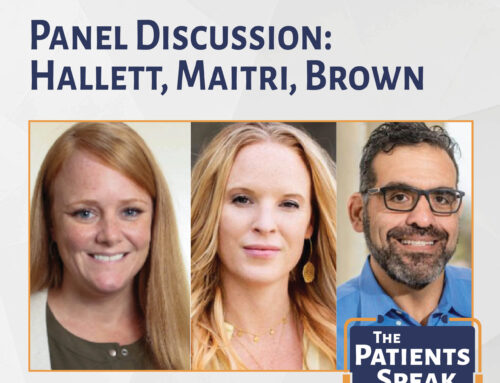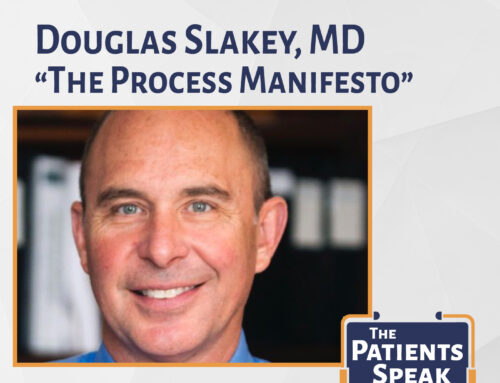Restaurants and Health Care: More in Common than You Might Think
 Guest commentary from an interview by 83bar with leading restaurant brand expert, Arjun Sen. By Mark Stinson
Guest commentary from an interview by 83bar with leading restaurant brand expert, Arjun Sen. By Mark Stinson
Today we see six major trends that will change the way restaurants serve their customers — and are especially relevant in the post-pandemic period. These trends, listed below, have applicability beyond the restaurant industry.
- Less wait
- Price transparency
- Age-targeted offerings
- Branded offerings
- Suggestive selling
- Consultative service
Let’s look at them through the lens of the patient journey and the patient’s experience with the healthcare system.
Less wait: pick up, delivery, drive-thru, mobile ordering, kiosks
When talking about food today, it really boils down to having food when I want it, where I want it, and how I want it. These are non-negotiable conditions. Let’s say we have a face-to-face working lunch. If a restaurant chooses not to bring food, they’re out. That’s how powerful the consumer is in all three of these dimensions. Now, this concept has expanded to everything. For example, even before the Comcast driver comes, I know how far out he or she is. Or consider our experience with Amazon. The company not only delivers, but also tells me 10 stops away what I need to do. I am so accustomed to having this information that now I miss it if they don’t tell me.
Price transparency: menus, packages, easy payment
When talking about price, health care is literally one of those places where we just give up. There’s no negotiation. I don’t even know, post-insurance, how much it costs.
Let’s look at something we’ve all experienced. For example, when the doctor has said, “I need you to come in, and we’re going to do an ultrasound.” Perhaps you’ve asked, “How much is that?” Even the doctor may have no idea. It may depend on whether or not you have insurance, or if you do have insurance, on your deductible and/or copay. Let’s say the cost is $1,200. Then, if you must pay that out-of-pocket, you may wonder about the ultrasound’s value. What are you going to do with that information, and do you have a choice? Could you go down the street for a $600 ultrasound?
Age-targeted offerings: kids, seniors, families
In thinking about targeted age groups, very rarely have we seen services designed just for them. We call our doctors family doctors, but when have we seen a whole family go in and take care of everything for all family members in a single appointment? Wouldn’t it be amazing for a family of four to take a half-day and get everything done? What if there were even a cafeteria to serve the family a free meal? You might think you were on a different planet!
Going back to our restaurant analogy, even when a family goes out to eat, they go to one restaurant, but they have the ability to order different things. If the family goes to a food court, each family member can choose different flavors and tastes. But how can that be applied to health care?
Branded offerings: unique recipes, cross-branded and co-branded, shop-in-a-shop
Let me ask you this. If there are choices, in other words, if you say, for example, where would I go for the best cancer care? Where would I go for the best heart care? People look at the U.S. News and World Report rankings, and some say, I go to Mayo Clinic or to MD Anderson or to the Baylor Heart Institute. These are some of the names that we all know. So have these facilities created a branded experience that differentiates them from other competitors?
Suggestive selling
When we go to a restaurant, we might ask, “What are the specials? What vegetarian offerings can you make?” But on the medical side, we have had little control. When they gave us the title of being a patient, we just accepted it and said to ourselves “patient”, okay.
But today, more and more patients bring forward treatments they’ve found in the latest journal articles online. In a perfect world, the doctor would not just state some choices, but rather, would tell the patient about all the treatments and their pros and cons. Doctor and patient would have a two-way conversation.
I also know that there is a negative connotation to the term suggestive selling. But what I’m talking about is offering complementary products. For example, the waiter who says, “You know what goes really well with this main course, this side goes really well. A lot of people like this wine with this meal, or a lot of people like this dessert after the meal.”
There should be that kind of conversation about your health care, too. If you’re going to have this test, you should also have this test along with it because together they’ll give the doctor a more accurate picture. Based on your sample, you have these 8-10 different treatments. Now, let’s review the treatment with the highest probability of success. It just makes sense.
Consultative service: a dedicated server, updated training
Another thing that these leading institutions do, from beginning to end, is put that one person, a volunteer, in front who can assist you. This is a service mindset. All positive guest experience elements should be in place. I think the need to do this has not been recognized within a somewhat monopolistic healthcare environment. But the moment doctors have to compete with others, then they will start to consider, “What can I do to make Arjun feel good at every point in the process?”
In summary, the patient experience, like the consumer experience, should be empowering.
An important thing to consider is that human beings are becoming more and more integrated in the sense that they form habits and preferences that lead them to feel in control. Which means as we are taking control, it comes from experiences such as ordering from Amazon to ordering pizza. It extends to everything we do.
We knew sooner or later, patients would start demanding this level of control from the healthcare industry. And one key driver is technology, which is changing everything we do. So that’s why I admire what smart people (like the ones at 83bar) are looking to do for this industry.
Those who don’t change will be left behind, as we’ve seen from the many restaurants and retailers who didn’t adapt. Recently, I was standing in front of a Sears store building at the mall. I could see only the shadow of the sign that used to be there.
In health care, it doesn’t have to be this way if we begin to recognize the desire of patients to take an active, informed role in their own health care.





